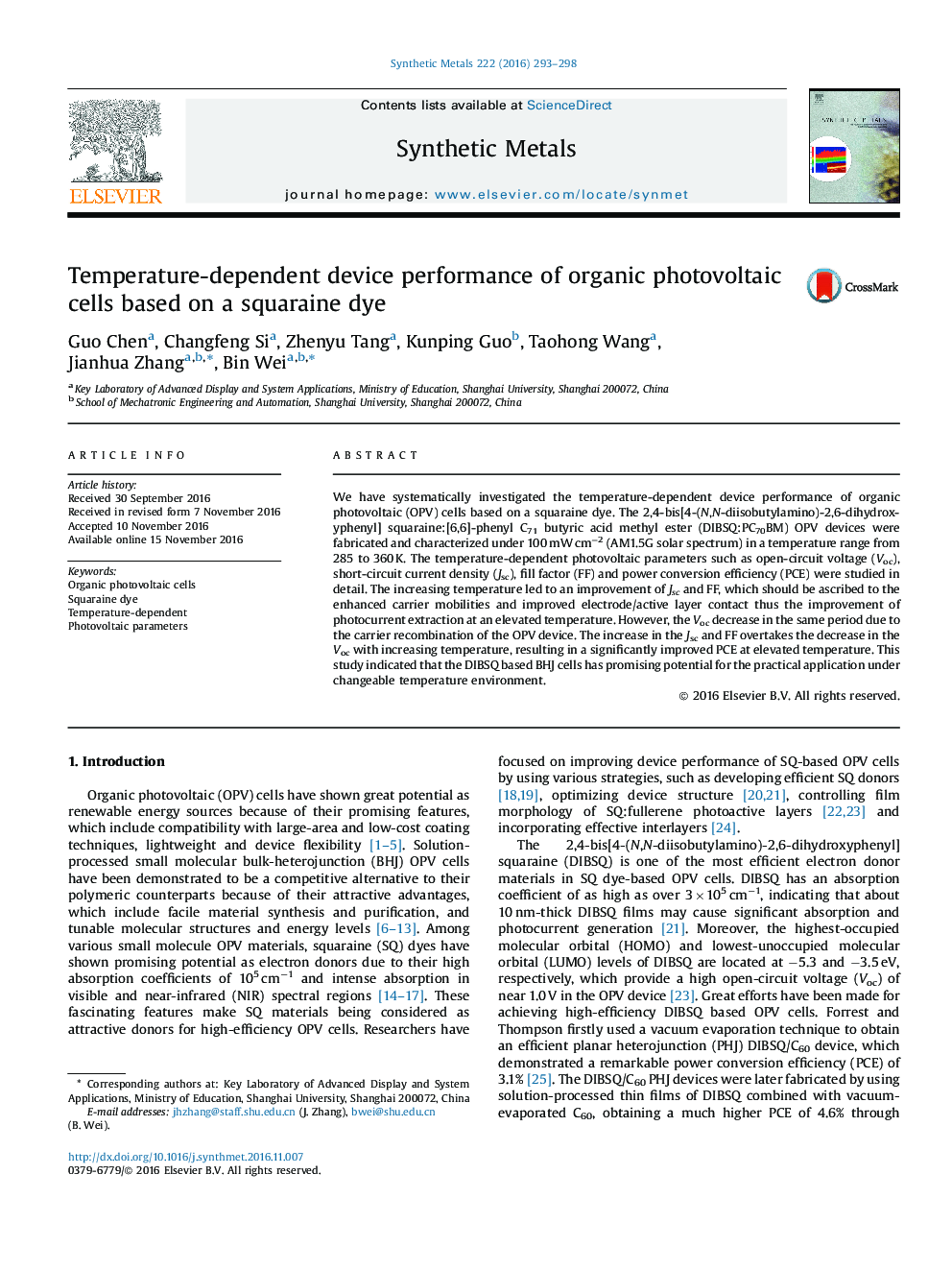| Article ID | Journal | Published Year | Pages | File Type |
|---|---|---|---|---|
| 5435519 | Synthetic Metals | 2016 | 6 Pages |
â¢Temperature-dependent device performance of a squaraine dye based OPV was studied.â¢Jsc, FF and PCE of the OPV cells increase with increasing the operating temperature.â¢Voc of the OPV cells decreases with increasing the operating temperature.
We have systematically investigated the temperature-dependent device performance of organic photovoltaic (OPV) cells based on a squaraine dye. The 2,4-bis[4-(N,N-diisobutylamino)-2,6-dihydroxyphenyl] squaraine:[6,6]-phenyl C71 butyric acid methyl ester (DIBSQ:PC70BM) OPV devices were fabricated and characterized under 100Â mWÂ cmâ2 (AM1.5G solar spectrum) in a temperature range from 285 to 360Â K. The temperature-dependent photovoltaic parameters such as open-circuit voltage (Voc), short-circuit current density (Jsc), fill factor (FF) and power conversion efficiency (PCE) were studied in detail. The increasing temperature led to an improvement of Jsc and FF, which should be ascribed to the enhanced carrier mobilities and improved electrode/active layer contact thus the improvement of photocurrent extraction at an elevated temperature. However, the Voc decrease in the same period due to the carrier recombination of the OPV device. The increase in the Jsc and FF overtakes the decrease in the Voc with increasing temperature, resulting in a significantly improved PCE at elevated temperature. This study indicated that the DIBSQ based BHJ cells has promising potential for the practical application under changeable temperature environment.
Graphical abstractDownload high-res image (183KB)Download full-size imageThe temperature-dependent device performance of organic photovoltaic cells based on a squaraine dye has been systematically investigated.
